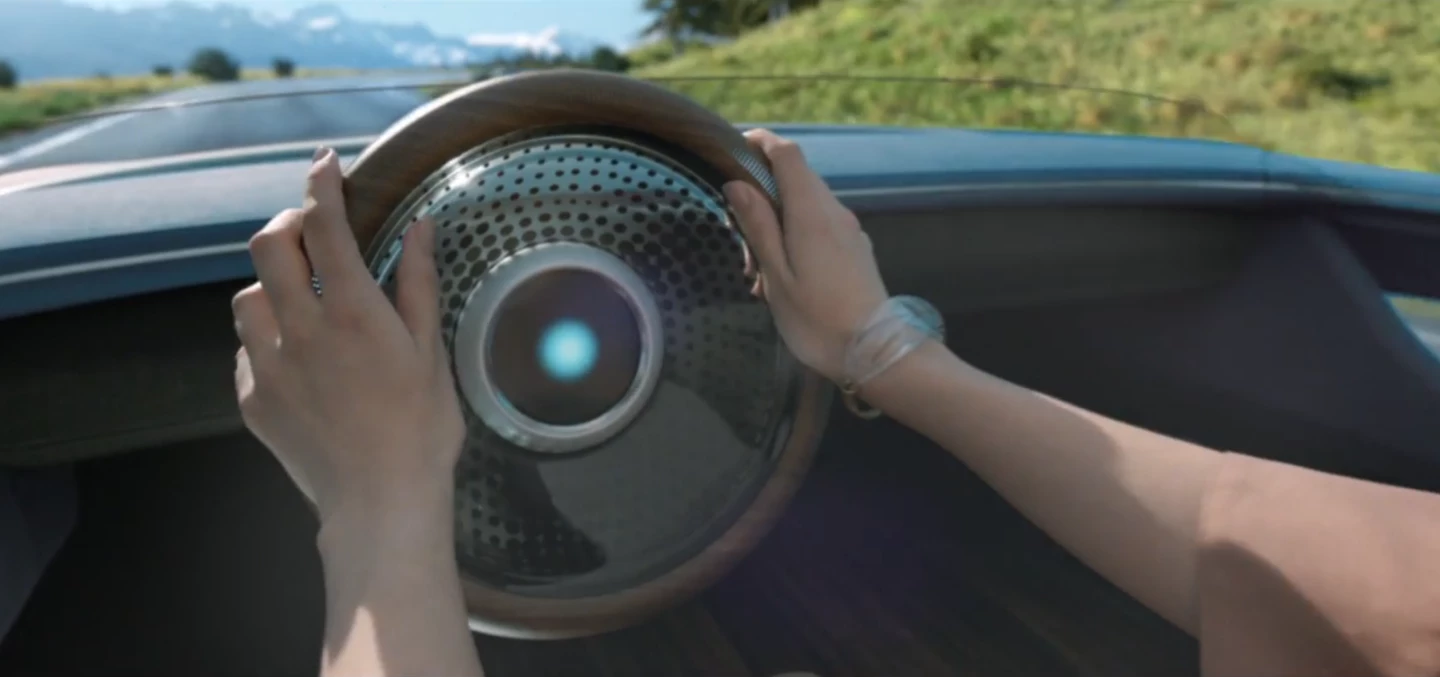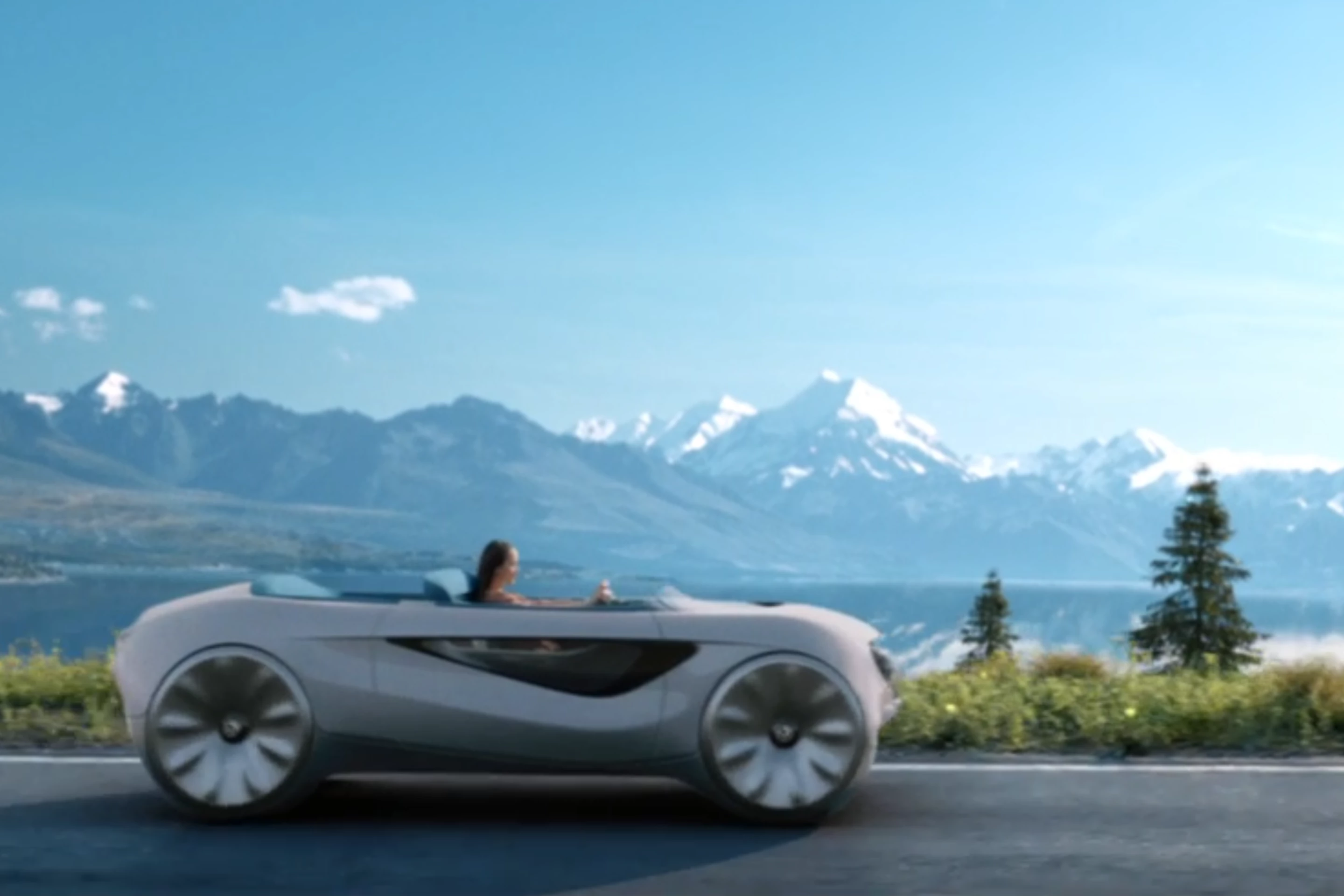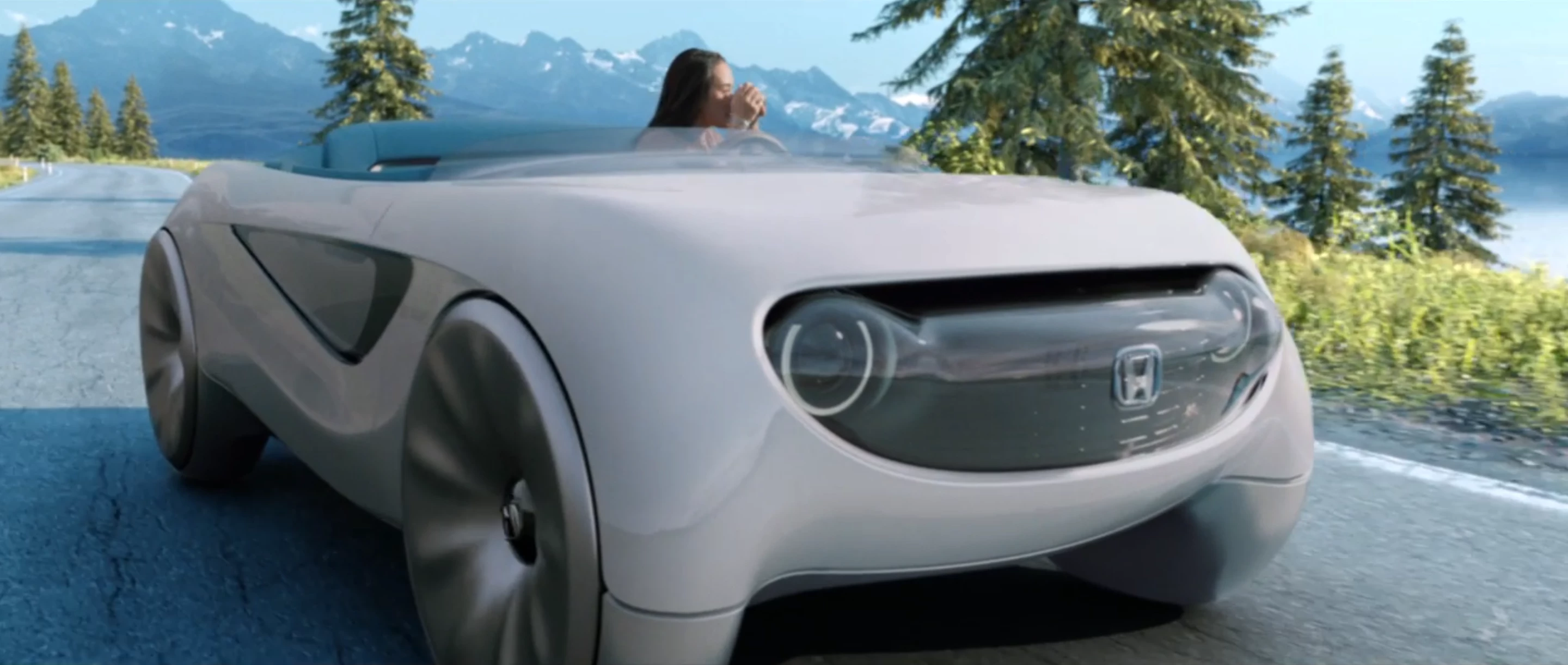The transition to autonomous driving will progress differently in different generations. Youngsters who never learned to drive will probably take to driverless cars like ducks to water. Snaggle-toothed old tire-shredders will never give up control of the wheel. And for those in between – a perineal generation, if you will – there'll have to be some percentage of cars that can do both, in a way that makes them practical but still allows you to celebrate the act of driving when the spirit possesses you.
This is the thinking behind Honda's "Augmented Driving Concept," which it's presenting at CES next month. It's a cheery little open-top roadster with spacey futurey wheels, electric drive and a tiny, low visor as a windshield. Its purpose is to demonstrate a new approach to the venerable steering wheel.
The car has "more than eight modes between fully autonomous and semi-autonomous operation," meaning that whatever you're doing behind the wheel, it's taking your input suggestions and running them by the computer before deciding if it'll do whatever you've asked it to do. There's a switch if you want to engage full autonomy, but the car won't wait for you to make the call if it feels like driving itself. It's always watching you in case you fall asleep, or start taking photos out the window, or use both hands to pick your nose, and it'll take the wheel without judgement the second it thinks you're compromised.

One pats the steering wheel twice to start, which is a nice window into how Honda thinks people feel about their cars, and there doesn't appear to be any pedals, so the yogically inclined are free to lotus-position it down the freeway with abandon. Instead, you'll push the wheel forward to tell the car to go faster, and pull it back to go slower.
You'll note I didn't say "you'll push the wheel forward to accelerate," because that's not what's happening at all. If you tell the car to go faster and it doesn't think that's a good idea, it simply won't. So there's no worries about being hard on the brakes in an emergency, and your bodyweight pushing you forward onto the steering wheel and making the car accelerate. It assumes all your inputs are those of a moron, which may well be the case given the general standard of driving on public roads, and it trusts its own judgement over your own.

Personally, as a member of said perineal generation, I'm not sure that this level of control really constitutes an opportunity to "experience the emotion and thrill of driving." But Honda is simply proposing a possible future vision here, so nobody's coming for my keys just yet.
Visitors to CES 2020 can take a simulated ride in the Augmented Driving Concept and feel the emotion and thrill of driving for themselves, before getting in their cars and experiencing the emotion and thrill of driving back to their hotels in Vegas traffic.
Source: Honda








